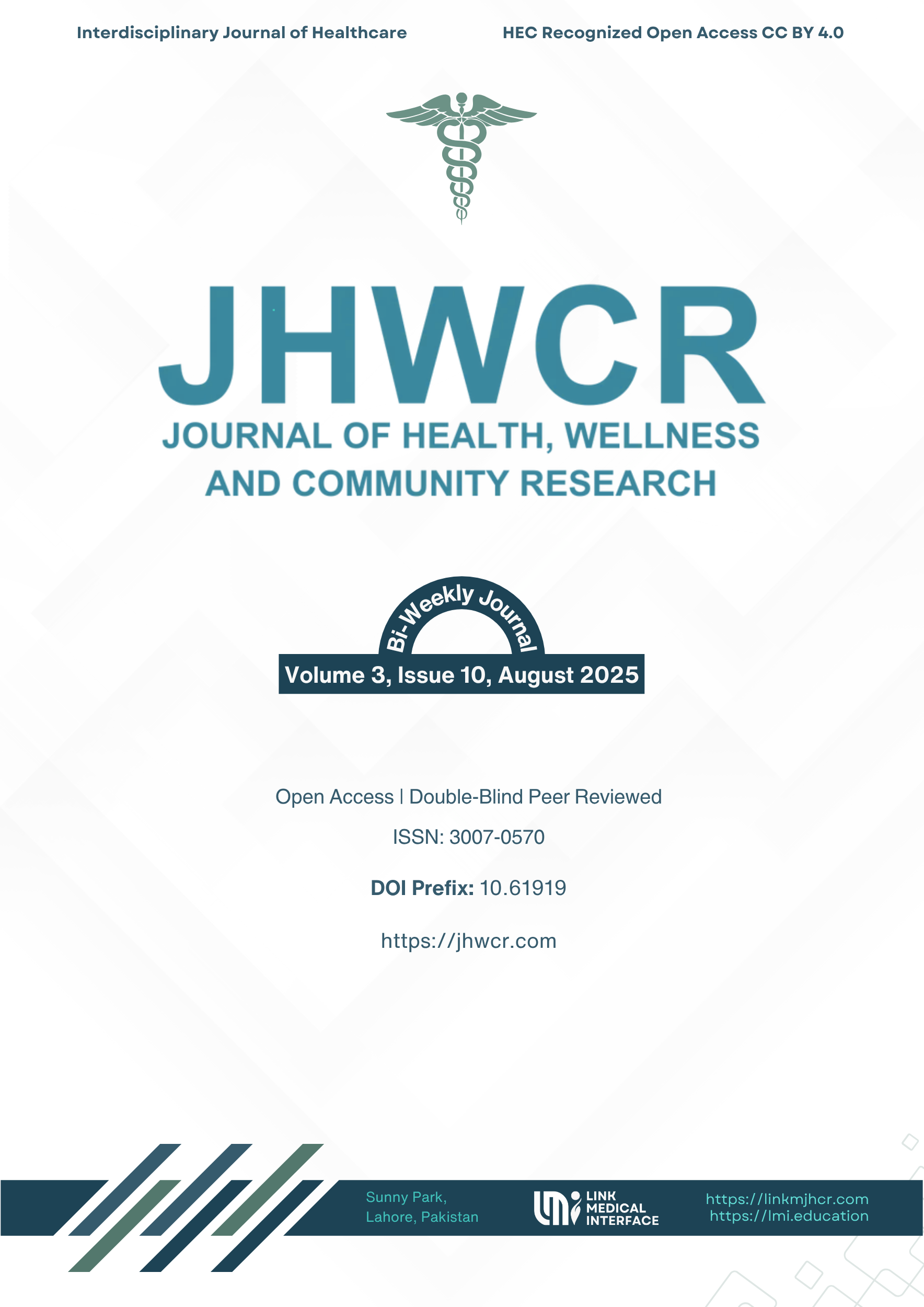Frequency of Work-Related Musculoskeletal Disorders and Ergonomic Hazards among Physical Therapy Professionals
DOI:
https://doi.org/10.61919/82yj0n12Keywords:
Lower back pain; Neck pain; Physiotherapy; Upper back pain; Work-related injury; Work-related musculoskeletal disorders.Abstract
Background: Work-related musculoskeletal disorders (WRMSDs) are prevalent among physical therapy professionals due to the physical demands of patient handling, repetitive tasks, and prolonged static postures. Despite international evidence documenting high WRMSD rates, data from Pakistan remain scarce, limiting targeted ergonomic interventions. Objective: To determine the prevalence of WRMSDs and identify ergonomic hazards among physical therapy professionals in Rawalpindi and Islamabad, Pakistan, and to compare prevalence by career stage. Methods: A descriptive cross-sectional study was conducted between September 2020 and February 2021 among 500 licensed physical therapists aged 25–60 years with at least six months of practice. Participants were recruited through convenience sampling from public and private healthcare facilities. Ergonomic risks were assessed using the Quick Exposure Check (QEC) and WRMSDs were identified via the body mapping tool. Demographic, occupational, and exposure data were analysed using descriptive statistics, chi-square tests, and independent t-tests, with p<0.05 considered significant. Odds ratios (ORs) and 95% confidence intervals (CIs) were calculated. Results: Participants had a mean age of 30.0 ± 10.86 years, mean experience of 3.54 ± 1.96 years, and 71.4% were female. The prevalence of WRMSDs was 72.4%, with neck (56.2%), lower back (49.0%), and upper back (45.6%) most affected. Mean QEC score was 45.72 ± 5.53, with 68.0% requiring investigation or intervention. Early-career therapists (≤5 years’ experience) had a significantly higher one-year WRMSD incidence than experienced therapists (>5 years) (34.0% vs. 24.0%; OR 1.61, 95% CI 1.02–2.54; p=0.040). Excessive hand force was reported by 94.6% of participants, and 12.6% frequently lifted or moved heavy patients or objects. Conclusion: WRMSDs are highly prevalent among physical therapy professionals in Pakistan, with early-career clinicians at increased risk. Targeted ergonomic education, mentorship, and workplace modifications are needed to reduce injury risk and promote career longevity.
Downloads
Published
Data Availability Statement
wer
Issue
Section
License
Copyright (c) 2025 Rahila Suleman, Ayesha Khalid, Irum Zahoor, Khansa Bashir Malik, Rida Razzaq Janjua, Hanan Azfar (Author)

This work is licensed under a Creative Commons Attribution 4.0 International License.


